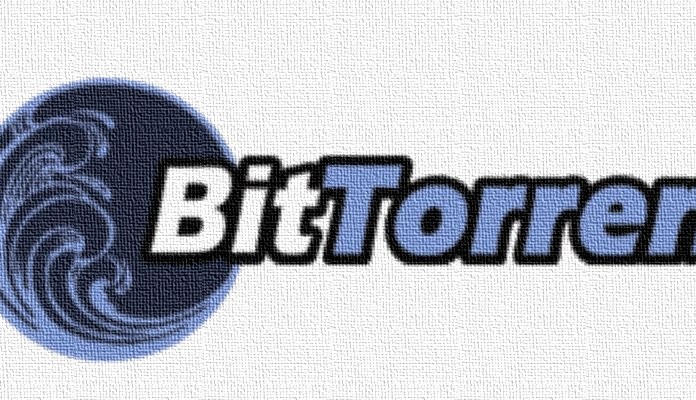File Sharing Technology BitTorrent Celebrates 10 Year Anniversary
July 05, 2011
on
on

For most technologies that inhabit the internet goes that you don’t have to go back far to find their point of origin. Still, it doesn’t cease to amaze me how fast these technologies change the status quo. In July 2001 a programmer called Bram Cohen unobtrusively announced his file sharing application BitTorrent to the world on a Yahoo! message board. Now, ten years later, the file sharing protocol is estimated to account for 21% of all internet traffic.
BitTorrent changed the fundamentals of file sharing. Before, the resources (hardware, bandwidth) needed to share were at the expense of the host making the file available. The disadvantages of such an asymmetric relationship are apparent in the traditional client-server model. The server offering the coveted file is also responsible for providing for the distribution channels. The more popular a file the more costly the distribution for the person hosting the server while the clients contribute little more than sending a file request. Another obvious disadvantage is the single point of failure. Too much traffic and the server goes down and no one gets the file.
In 1999 the first peer-to-peer file sharing network Napster was born. But the system still hinged on a central server which was needed for peer discovery. That central server accounted for the demise of the network, because those hosting the server were sued into oblivion by the music industry. Along came Gnutella the first distributed network without a central server. But the problem of asymmetry still wasn’t addressed. A source peer offering a file has to send out the data to all the peers requesting the file. And because upload speeds offered by ISP’s are a factor 10 lower than download speeds, this slows down the data flow of the network significantly.
And there lies the main innovation of BitTorrent. The protocol divides a file in segments of equal size called pieces (usually 512 kB or 1MB each). When a requesting peer (a leech) connects to a source peer (a seed) it receives random pieces. As soon as the leech has downloaded the first pieces it can immediately start uploading them to other leeches. This way all the nodes in the network contribute their resources to sharing the file amongst peers. This solution makes BitTorrent the fastest file sharing technology on the net.
BitTorrent is mostly known for sharing pirated content. But technology never equals its (most prominent) use. The specific properties of BitTorrent make it specifically suitable to distribute large datasets. Recently Twitter and Facebook shifted to the BitTorrent protocol to distribute the petabytes of data uploaded by their millions of users. Tom Cook of Facebook’s system engineering group confided that keeping all their servers updated was a troublesome task until they discovered BitTorrent.
Founder Bram Cohen doesn't care either way. For him it's all about the technology. “People expect me to be some kind of copyright crusader or anti-copyright crusader. On some kind of deep level, I just don’t care. To me, they’re just bits. As for what the bits are, I don’t care,”
BitTorrent changed the fundamentals of file sharing. Before, the resources (hardware, bandwidth) needed to share were at the expense of the host making the file available. The disadvantages of such an asymmetric relationship are apparent in the traditional client-server model. The server offering the coveted file is also responsible for providing for the distribution channels. The more popular a file the more costly the distribution for the person hosting the server while the clients contribute little more than sending a file request. Another obvious disadvantage is the single point of failure. Too much traffic and the server goes down and no one gets the file.
In 1999 the first peer-to-peer file sharing network Napster was born. But the system still hinged on a central server which was needed for peer discovery. That central server accounted for the demise of the network, because those hosting the server were sued into oblivion by the music industry. Along came Gnutella the first distributed network without a central server. But the problem of asymmetry still wasn’t addressed. A source peer offering a file has to send out the data to all the peers requesting the file. And because upload speeds offered by ISP’s are a factor 10 lower than download speeds, this slows down the data flow of the network significantly.
And there lies the main innovation of BitTorrent. The protocol divides a file in segments of equal size called pieces (usually 512 kB or 1MB each). When a requesting peer (a leech) connects to a source peer (a seed) it receives random pieces. As soon as the leech has downloaded the first pieces it can immediately start uploading them to other leeches. This way all the nodes in the network contribute their resources to sharing the file amongst peers. This solution makes BitTorrent the fastest file sharing technology on the net.
BitTorrent is mostly known for sharing pirated content. But technology never equals its (most prominent) use. The specific properties of BitTorrent make it specifically suitable to distribute large datasets. Recently Twitter and Facebook shifted to the BitTorrent protocol to distribute the petabytes of data uploaded by their millions of users. Tom Cook of Facebook’s system engineering group confided that keeping all their servers updated was a troublesome task until they discovered BitTorrent.
Founder Bram Cohen doesn't care either way. For him it's all about the technology. “People expect me to be some kind of copyright crusader or anti-copyright crusader. On some kind of deep level, I just don’t care. To me, they’re just bits. As for what the bits are, I don’t care,”
Read full article
Hide full article


Discussion (0 comments)